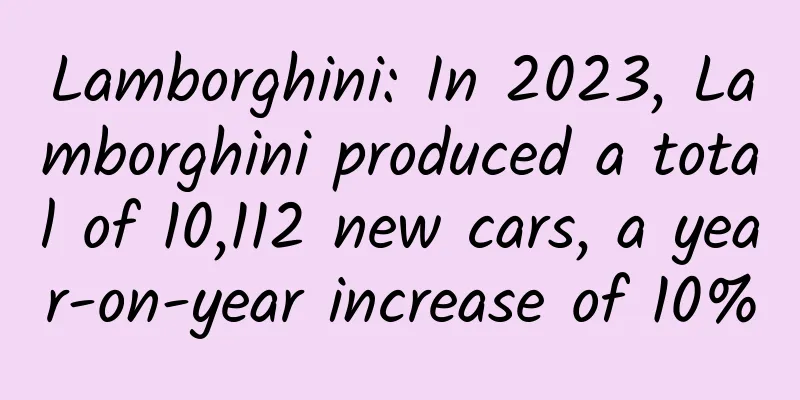Lamborghini: In 2023, Lamborghini produced a total of 10,112 new cars, a year-on-year increase of 10%

|
According to multiple reports, the well-known Italian supercar brand Lamborghini announced its 2023 report card. It is reported that Lamborghini produced a total of 10,112 new cars in 2023. It is worth mentioning that this is the first time that the company's production has exceeded 10,000 vehicles in its 60 years of existence, an increase of 10% compared to 2022. The reason why Lamborghini's production has been greatly increased is largely due to its first SUV model Urus. It is understood that the annual delivery volume of Urus was 6,087 units, accounting for 60% of the total production, while the second place was the "Maverick" Huracan, with a total delivery of 3,962 units throughout the year. The Aventador, Lamborghini's flagship supercar, is about to be phased out, so only 12 units were sold throughout the year. Lamborghini plans to fully hybridize its car lineup this year. With the launch of Reveulto and Huracan successors, as well as the launch of the facelifted, hybrid and even pure electric versions of Urus, total production is expected to rise to more than 13,000 vehicles. Zikuai Technology |
>>: Samsung Note Edge curved screen experience is very easy to operate after getting used to it
Recommend
Introduction to Yang Wanli: Has the ranking of optimized websites recovered?
The website optimization ranking in the second ha...
Who retires satellites? Space tugs!
In almost every harbor, we can see a strange kind...
Marketing promotion: from short videos to selling products through live streaming!
Against the backdrop of the live streaming craze,...
Haier SmartCare smart socket experience: even if you forget to turn off your appliances, you can go out with peace of mind
If the concept of smart home is not as hot as it ...
Kidney and leek can nourish the kidney? It's not that easy...
If you were to rank the model workers among your ...
End time of the epidemic in 2022: Can the epidemic end on May 1st and return to normal?
Recently, new cases have appeared in Beijing, Sha...
How to establish quantitative operational indicators for B-side operations?
Some time ago, I wrote an article about how to bu...
It can build a nest with just a few branches. Is there any bird that is better at making things messy than this one?
There is a magical forum in Baidu Tieba - Bird Fo...
An information flow advertising landing page worthy of collection by all industry professionals
We all know that the task of most landing pages i...
Before going to the cinema to watch the New Year's blockbuster, you must read this epidemic prevention reminder carefully
Spring Festival Holiday Many New Year blockbuster...
Private Domain Traffic Operation and Construction Strategy
If we compare private domain traffic to a fish po...
Bird "hybrids" are rare enough, but how come there are also hermaphroditic birds?
Many readers know that many caged hibiscus bird l...
Behind Jia Yueting's car-making crisis: the race between "barbarians" and time
"The vision is beautiful, but making cars is...
Android app automatic updates
Source code introduction Automatic updates are po...
A Brief History of China's Observatories | Why did ancient civilizations always like to look up at the sky?
Archaeology is often a job of digging deep into t...









